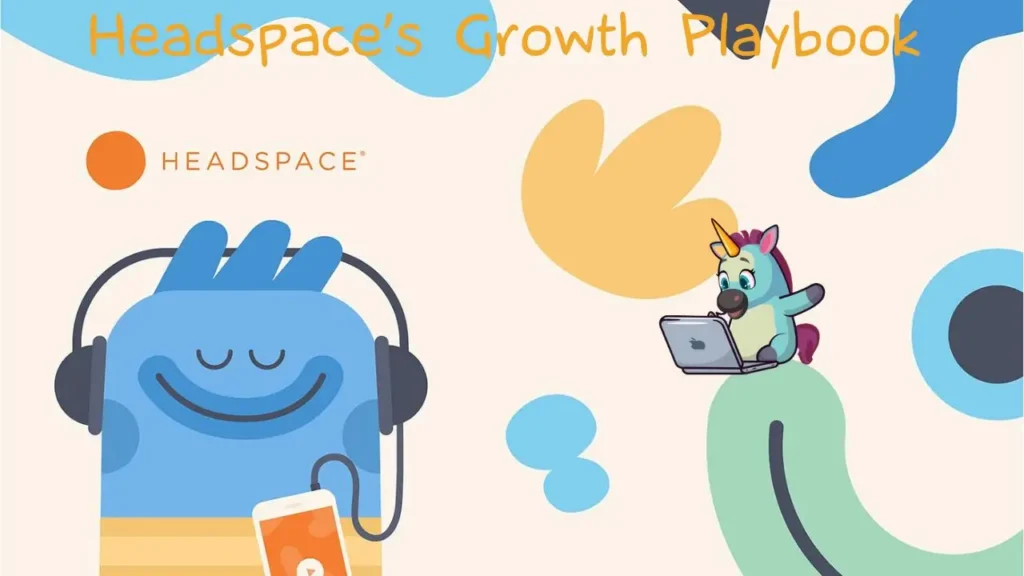
Hey there, growth enthusiasts!
Get ready to have your mind blown by the growth story of Headspace!
This meditation app has skyrocketed to 3.3 million subscribers and a $3B valuation, and we’re here to uncover their secret sauce.
No fluff, no BS, just real-life examples and hard data.
From their content clusters to partnerships, we’ll dive deep into the growth tactics that made Headspace a leader in the mindfulness space.
So, grab a seat, take a deep breath, and let’s explore how Headspace became the top dog of meditation apps!
The Idea 💡
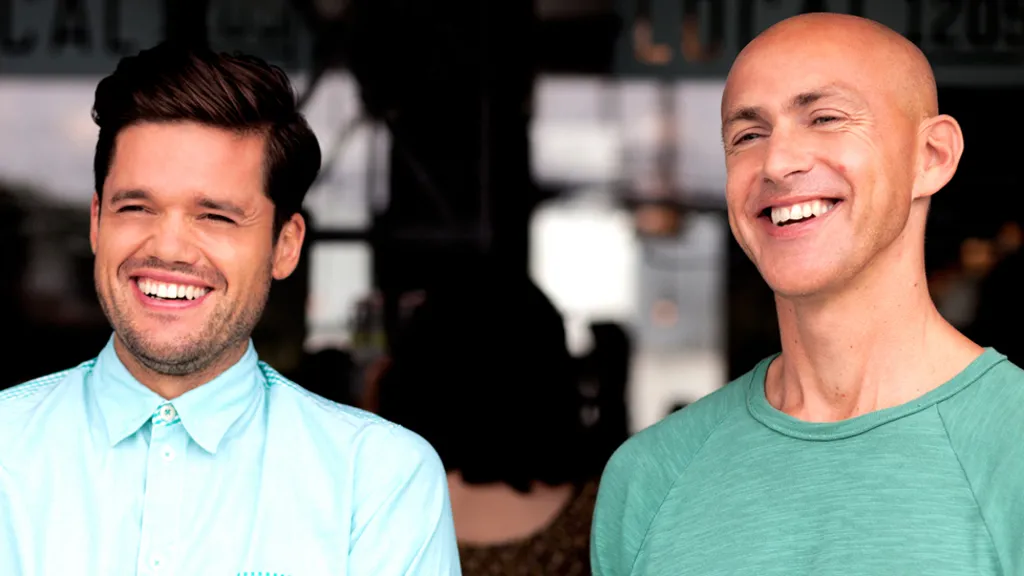
It’s 2010, and meditation is still seen as a hippy-dippy practice.
But Andy Puddicombe and Richard Pierson, the dynamic duo behind Headspace, have a different idea about it.
Andy, a former Buddhist monk, saw a problem:
Meditation was inaccessible and intimidating to the masses.
Richard, a brilliant marketer, knew they could change that.
Together, they cooked up a revolutionary idea:
An app that makes meditation simple, fun, and accessible to everyone.
No more incense or chanting – just a sleek, user-friendly app that anyone could use.
And just like that, Headspace was born!
The Problem 😫

In our fast-paced, always-on world, stress and anxiety were running rampant.
People were burning out left and right, desperate for a moment of calm.
But who has time for hours of meditation when you’re juggling work, family, and social life?
The existing meditation options were either too intimidating or too boring.
Most people thought meditation was only for hippies or monks.
But the reality?
Everyone could benefit from a little mindfulness.
The world needed a solution that made meditation accessible, engaging, and easy to fit into a busy lifestyle.
The MVP 🛠️
So, how did Headspace turn its idea into a reality?
They started lean and mean with a Minimum Viable Product (MVP).
The goal?
To create a meditation app that was simple, intuitive, and effective.
They focused on three key features:
- Guided meditations led by Andy’s soothing voice
- Sleek, user-friendly design
- Bite-sized sessions perfect for busy schedules
No fluff, no frills – just the essentials.
The MVP was a hit!
Users loved the app’s simplicity and effectiveness.
Product-Market Fit 🎯
Headspace knew they had something special, but they needed to prove it.
So, they put their MVP to the test and watched the numbers roll in.
In the first year alone, Headspace attracted a staggering 1 million users, all through word-of-mouth and organic search.
By 2018, they had hit 30 million downloads and were growing at a rate of 15% month-over-month.
But the real validation?
Their user retention rates were through the roof.
In fact, 40% of users who completed the free Basics course went on to subscribe to the paid version.
And get this – the average user was spending 22 minutes per day on the app.
With numbers like these, it was clear that Headspace had found its product-market fit.
They had created a product that not only attracted users but kept them coming back for more.
Positioning & Branding 🌈
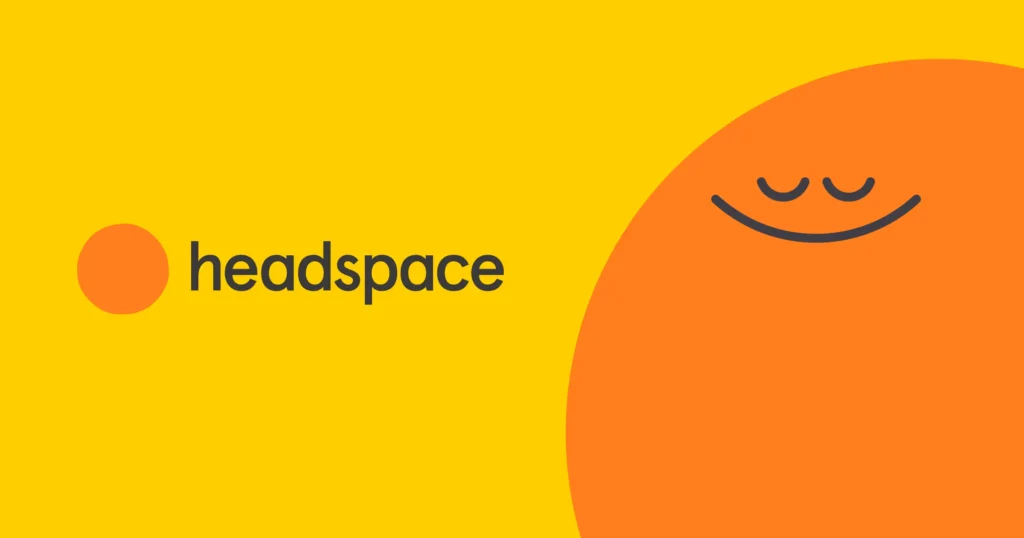
Headspace didn’t just create a product; they crafted a brand that was quirky, relatable, and instantly recognizable.
Their messaging was clear:
Meditation isn’t just for hippies and yoga gurus – it’s for everyone!
Headspace’s tone of voice was friendly, witty, and always encouraging.
They made meditation feel accessible and fun, like a gym membership for your mind.
Their visual identity was just as playful, with bold colors, cute illustrations, and a lovable mascot.
Speaking of mascots, meet the Headspace buddy – a smiling, anthropomorphic dot that popped up throughout the app.
This little guy became the face of the brand, offering high-fives and words of encouragement.
Headspace’s branding extended beyond the app, with a strong presence on social media and even in real life.
From their Instagram memes to their pop-up meditation pods, Headspace made mindfulness mainstream.
Through their positioning and branding, Headspace didn’t just make meditation cool – they made it a lifestyle.
Pricing 💸
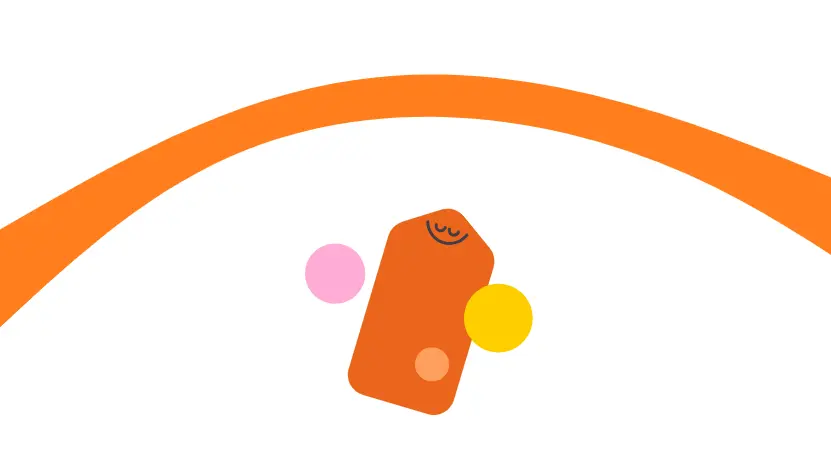
Headspace’s pricing strategy combined accessibility and value in one neat package.
Their freemium model was the perfect gateway drug, giving users a taste of the good stuff with their free Basics pack.
This pack included 10 guided meditations, giving users a chance to dip their toes into the world of mindfulness.
But once they were hooked, it was time to upgrade to the full Headspace experience.
The Premium subscription, priced at just $12.99 per month or $69.99 per year, unlocked a world of content.
Users could access hundreds of guided meditations, sleep sounds, and mindfulness exercises.
But wait, there’s more!
Headspace also offered a Family plan for just $19.99 per month, allowing up to 6 users to share the mindfulness love.
And for businesses, Headspace for Work provided bulk pricing options, making meditation accessible to entire organizations.
With plans starting at just $9.99 per user per year, Headspace made it easy for companies to invest in their employees’ well-being.
By offering flexible pricing options and unbeatable value, Headspace made meditation affordable and accessible to everyone.
🚀 Acquisition
Headspace’s acquisition strategy was a thing of beauty, combining organic growth, paid acquisition, and partnerships to fuel their meteoric rise.
Let’s start with the numbers:
In 2020, Headspace raked in a jaw-dropping 70 million downloads and boasted over 2 million paying subscribers.
But how did they do it?
First up, organic growth.
Headspace’s SEO game was strong, with the app ranking for over 10,000 keywords related to meditation and mindfulness.
In fact, they managed to snag the top spot for the highly competitive keyword “meditation app” in both the App Store and Google Play.
But Headspace didn’t just rely on organic growth – they also invested heavily in paid acquisition.
In 2019, they spent a whopping $21 million on marketing, with a focus on social media and influencer partnerships.
And it paid off – Headspace’s social media following skyrocketed, with over 1 million followers on Instagram alone.
But the real secret sauce was their partnerships.
Headspace teamed up with some of the biggest names in tech, including Amazon, Google, and Apple, to integrate their app into their respective platforms.
They also partnered with airlines like Delta and United to offer in-flight meditation sessions, reaching millions of travelers.
And let’s not forget about their celebrity collaborations – Headspace worked with the likes of John Legend and Kevin Hart to create custom meditation packs.
By leveraging a combination of organic growth, paid acquisition, and strategic partnerships, Headspace was able to reach millions of users and cement their position as the top meditation app on the market.
Growth Loops 🔄
Headspace’s success didn’t happen by accident – it was the result of a carefully crafted growth strategy that leveraged the power of loops.
Referral Loop
- A user signs up for Headspace and finds value in the app
- Headspace prompts the user to invite friends, offering a free month of Premium for both the referrer and the referee
- The user shares the app with friends, generating new sign-ups
- New users become the input for the next cycle of the loop
Content Loop
- A user engages with Headspace’s content (guided meditations, sleep content, mindfulness exercises)
- The more content the user consumes, the more valuable the app becomes to them, and they become a paid member
- Headspace uses the $$$ from new members to create and distribute more content.
- New users engage with Headspace’s new content, restarting the loop
Product Led Loop
- A user signs up for Headspace and starts using the app regularly
- Headspace uses personalized recommendations and reminders to keep the user engaged
- Engaged users are more likely to subscribe to Headspace’s paid plans (output)
- Headspace uses the revenue to improve even more the app and new users become paid members fueling the loop
By understanding and optimizing these growth loops, Headspace has created a closed system where the output of each loop (new users, engaged users, subscribers) becomes the input for the next cycle.
This self-reinforcing system drives sustainable, long-term growth, making Headspace a leader in the meditation app market.
Activation 🎬
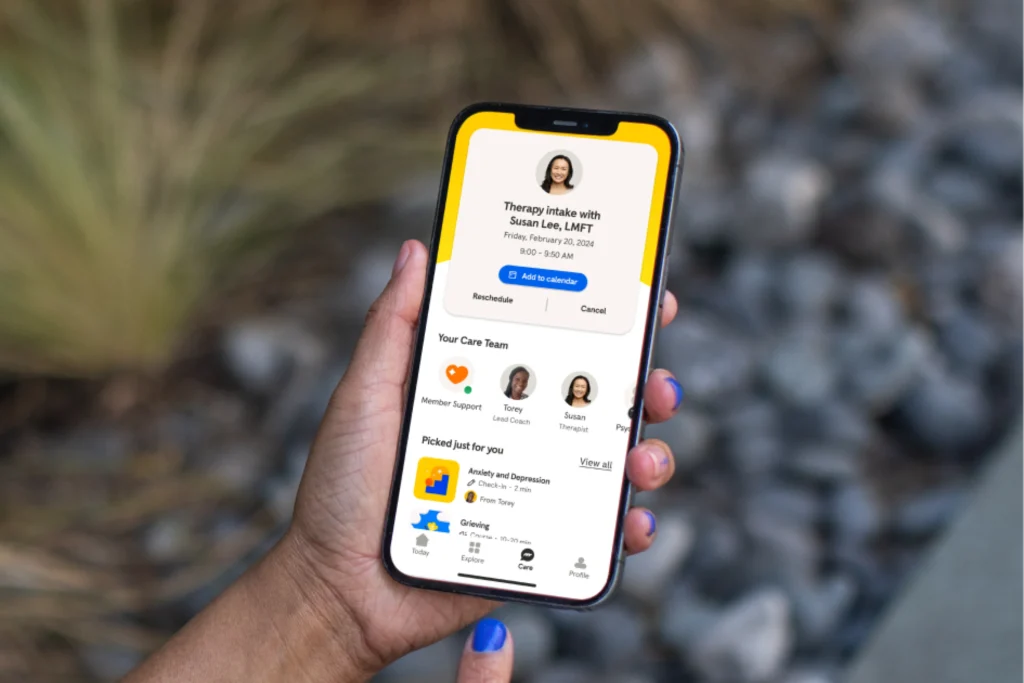
Headspace knows that the key to a user’s heart is through their first meditation experience.
And they’ve got the activation strategy down to a science!
Enter the “Take10” program – 10 days of guided meditation, each lasting just 10 minutes.
It’s like the meditation equivalent of training wheels, easing users into the practice without overwhelming them.
But here’s where the magic really happens – the “Aha moment!“.
Headspace has carefully crafted their onboarding journey to guide users towards this pivotal realization.
As users progress through the “Take10” program, they start to experience the benefits of meditation firsthand.
Reduced stress, increased focus, and a newfound sense of clarity – it’s like a lightbulb switching on in their minds.
And that’s precisely what Headspace is aiming for – that moment of enlightenment when users realize, “Wow, this meditation thing actually works!”
But Headspace doesn’t just leave users hanging after their “Aha moment!”.
They continue to nurture their newfound mindfulness journey with an engaging user interface, adorable animations, and the soothing guidance of Andy’s voice.
It’s like having a personal cheerleader in your pocket, encouraging you to keep up the good work.
By designing an activation strategy that leads users to their “Aha moment!” and supports them beyond it, Headspace has cracked the code on turning skeptics into devotees.
Retention 🔒
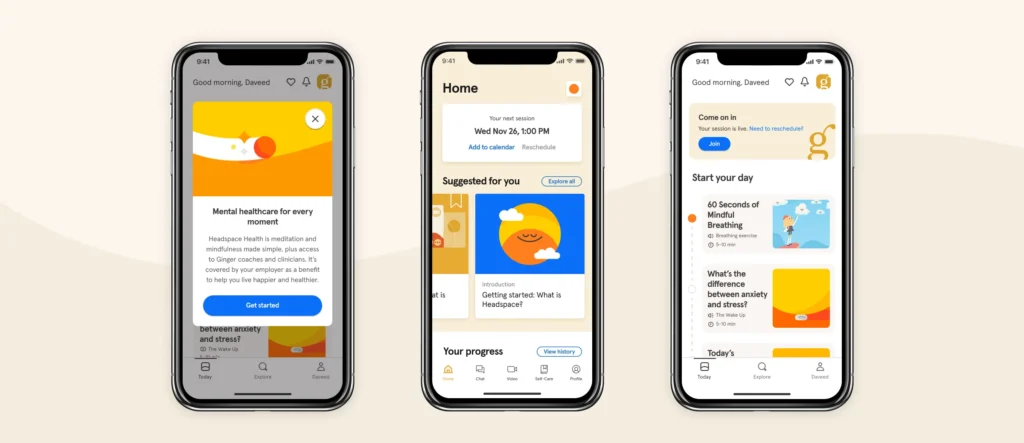
So, you’ve got users hooked on the meditation train, but how do you keep them coming back for more?
First up, let’s talk about the power of habit.
Headspace knows that the key to long-term retention is to make meditation a daily habit, as natural as brushing your teeth or checking your phone.
That’s why they’ve gamified the experience with streaks, rewards, and challenges.
Users are motivated to keep up their daily practice, not just for the mental benefits, but also for the sweet satisfaction of seeing those numbers climb.
But Headspace isn’t just relying on gamification to keep users engaged.
They’re constantly updating the app with fresh content, from new guided meditations to sleep stories and mini-meditations for specific situations.
And let’s not forget the power of community.
Headspace has fostered a vibrant online community where users can connect, share their experiences, and support each other on their mindfulness journeys.
It’s like a virtual group hug, reminding users that they’re not alone in their quest for inner peace.
But perhaps the most powerful retention tool in Headspace’s arsenal is the results users experience.
As they continue to meditate regularly, users report reduced stress, better sleep, and increased overall well-being.
It’s like a positive feedback loop – the more they meditate, the better they feel, and the more likely they are to stick with it.
Referral 📣

Headspace has turned their users into a powerful word-of-mouth marketing machine!
By offering a free month of Headspace Plus for both the referrer and the referee, they’ve created a win-win situation that’s as irresistible as a freshly baked cookie.
Users share the joy of meditation with their friends and family, knowing that they’ll both reap the rewards.
It’s like a happiness-spreading pyramid scheme, except everyone actually benefits!
🎓 Lessons Learned: Headspace’s Blueprint for Mindful Growth 📚✨
Here are some lessons we can all learn from Headspace’s growth!
Find a need and fill it with passion
Andy and Rich recognized the growing demand for accessible meditation in a stress-filled world.
By combining their expertise and passion, they created a product that not only met this need but also sparked a global mindfulness movement.
Lesson: Find a problem you truly care about and pour your heart into solving it.
Use strategic partnerships to expand your reach
Headspace has collaborated with a diverse range of partners, from airlines and hotels to Netflix and the NBA.
These partnerships have exposed the app to millions of potential users and solidified its position as a leading meditation platform.
Lesson: Seek out mutually beneficial partnerships to tap into new audiences and accelerate your growth.
Invest in content creation to educate and engage
Headspace’s success is built on a foundation of high-quality, engaging content.
From guided meditations and animated videos to blog posts and social media, they’ve mastered the art of educating and entertaining their audience.
Lesson: Create valuable content that informs, inspires, and keeps your users coming back for more.
Create a brand identity that resonates
Headspace’s playful illustrations, soothing color palette, and friendly tone of voice have become iconic in the world of mindfulness.
By creating a brand that is both recognizable and relatable, they’ve fostered a deep connection with their users.
Lesson: Develop a unique brand identity that captures your values and appeals to your target audience.
Take advantage the power of iterative improvement
Headspace’s journey has been one of continuous learning and adaptation.
By listening to user feedback, analyzing data, and experimenting with new features, they’ve consistently refined their product to better serve their community.
Lesson: Continuously seek ways to improve your product based on user insights and changing needs.
Phew, what a mind-blowing journey through the world of Headspace!
But remember, these insights are just the beginning.
The real magic happens when you apply them to your own business and make them your own!
So go forth, my friend, and grow like a Headspace pro!
Just remember to stay calm and “om” your way to success!
And if you found value in this deep dive into Headspace’s rise to mindfulness mastery, be sure to share it with your fellow marketers and growth enthusiasts!
Until next time, keep calm and grow on!

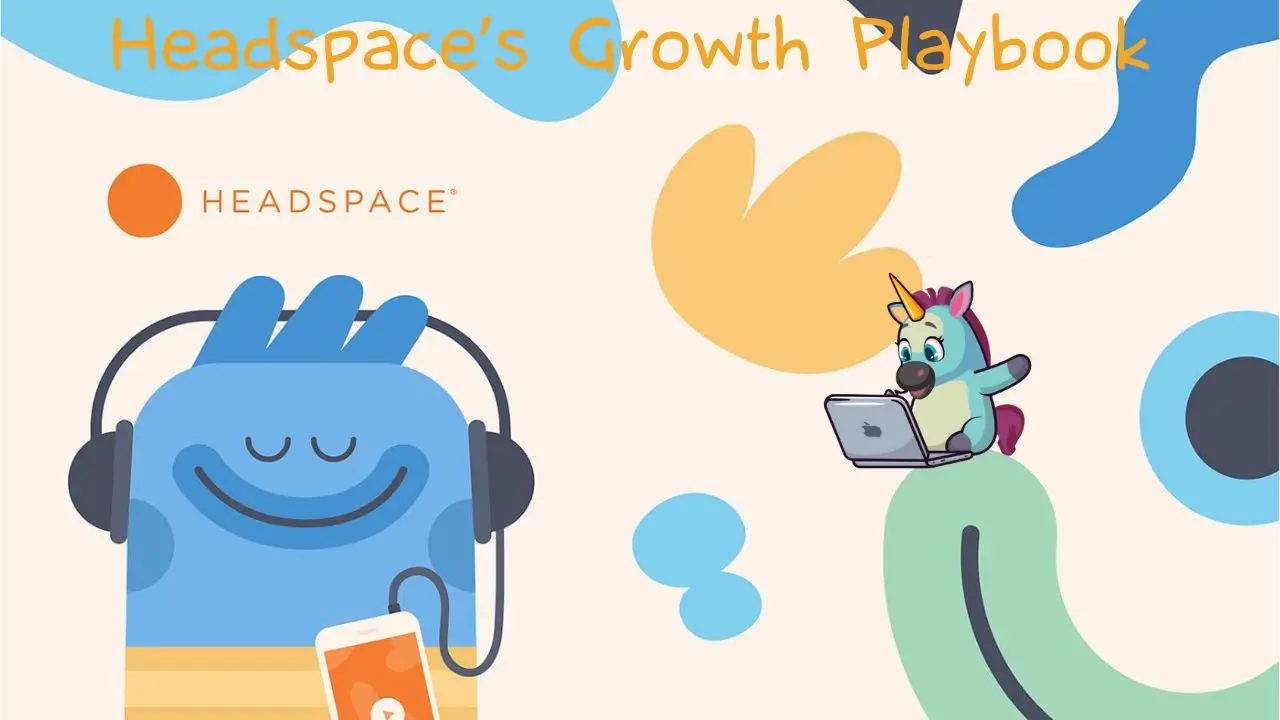





Leave a Reply